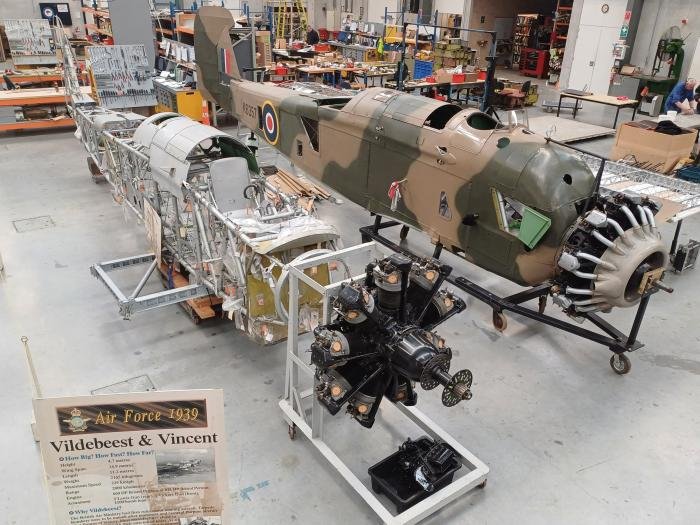Vickers biplanes come together in RNZAF museum restoration hangar
At the Air Force Museum of New Zealand at Wigram, Christchurch, restoration of Vickers Vildebeest NZ102 has received a major boost with the arrival of part-restored Vickers Vincent K6357/NZ311 from Auckland. The two aircraft now sit side-by-side in the museum’s hangar, with the Vincent providing a 3D model for the RNZAF restoration team to study.
The Vincent has been moved from Dairy Flat airfield near Auckland to New Zealand’s South Island through the generosity of its owners, the Subritzky family. The Vildebeest torpedo bomber first flew in 1928, and its 1931 general-purpose/army co-operation development, the Vincent, is almost identical, so Don and Steve Subritzky’s loaned aircraft will be of great assistance to the museum as it looks to speed up the work. NZ102 is the most complete Vildebeest in existence.
Vildebeest NZ102 has been in the Wigram collection for more than 20 years, along with minor components from other examples. The restoration team has been searching the world for drawings and reference material for many years. While there are Air Publication guides to provide an overview, no detailed engineering drawings remain, leaving the team with only about 20 per cent of the information necessary to complete the work.
The Vildebeest first entered service with the RAF in 1932, and the Vincent is a later development of the design, going into service in 1934. The aircraft share the same engine, a Bristol Pegasus. The main difference is that the Vildebeest’s torpedo bay was replaced in the Vincent with an auxiliary fuel tank.
The museum’s NZ102 was one of 12 brand-new Vildebeest torpedo bombers received by the RNZAF in 1935. Another 27 ex-RAF aircraft were added in 1940-41, making a total of 39. The RNZAF operated 62 Vincents alongside the Vildebeests.

NZ102 has a fascinating service history. On 2 May 1938, a young pilot named Leonard Trent took the controls of the aircraft during his pilot training, going on to fly in NZ102 as pilot or passenger 13 times. In August 1942, Trent became a flight commander with No 487 Squadron, flying Lockheed Venturas from RAF Feltwell, Norfolk. Trent was shot down on 3 May 1943 during the disastrous attack on a power station in Amsterdam, although he did complete the bombing run and shoot down a Bf 109 with his forward-firing guns before being thrown clear of the bomber as it broke up at 7,000ft. He spent the rest of the war as a PoW, and was involved in the legendary escape attempt at Stalag Luft III on 24 March 1944. For his heroism during the Amsterdam raid, Trent received the Victoria Cross from King George VI in an investiture ceremony at Buckingham Palace on 26 March 1946. He was one of only three members of the RNZAF to be so honoured.
With the RNZAF, the Vildebeest was used in such roles as coastal defence, general reconnaissance, training and target drogue-towing. The rarity and historical significance of the Vildebeest means it is one of the most important military aircraft held in a museum collection in New Zealand. The museum has prioritised this challenging project because of its part in the development of the RNZAF.

